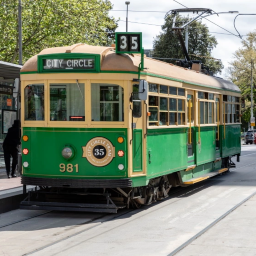

It’s been nearly 7 years since I was in Melbourne, so this might no longer work - but an un-advertised hack then was: The ticket is valid for two hours starting from the next hour. So, if you buy a ticket at x:59, your ticket is valid for 2 hours, 1 minute. If you buy it at x:01, you get 2 hours, 59 minutes. That’s why I said 2-3 hours.
That was a holdover from the previous paper ticketing system (MetCard) – it would always give you an expiry time on the hour, so a nominal two-hour ticket would last at least two hours. Myki behaved the same way at first, but they changed it a couple of years ago to always give you exactly two hours, so you can’t use that trick any more.
That’s why I said 2-3 hours. When I was there, they’d priced a 2-zone return journey as being slightly cheaper than a daily fare. The daily cap didn’t exist, yet though - these days, it’d likely be $10 for the day either way.
The discounted return trip for a two-zone journey only applied if it was after 9AM. That was another holdover from the paper MetCard system. I believe it was phased out at some point, perhaps when they reduced the price of longer journeys.
The price for a day being the same as two 2-hour trips when you had a multi-trip ticket already existed with the paper MetCard system. There were three multi-trip tickets that were sold for the same price:
- 10×2 hour
- 5×Daily
- Weekly
The weekly ticket was pretty simple to understand. It was valid for seven logical days, starting on the day that you first validated it (a logical day ended at about 2AM, not midnight – the few services after midnight before transport stopped for the night counted as the previous day). The 5×Daily was pretty simple as well – you could use it all day on five logical days, but they didn’t need to be contiguous. If you travelled most days, including at least one day on the weekend, a weekly would be cheaper. But if you travelled no more than five days per week and sometimes travelled four days or less, the 5×Daily was cheaper, because you could carry over your unused days to the next week.
The 10×2 hour was more complicated. The first time you used it in a logical day, you’d use up one “ride” which would last no less than two hours (i.e. up to 2:59 if you validated right after the hour). The second time you used it in the same logical day, it would use up one more ride which would last until the end of the logical day. So you’d never use more than two of your “rides” in a single logical day, no matter how much you travelled. This meant that there was really no reason to buy a 5×Daily ticket – the 10×2 hour ticket got you the same number of logical days of travel for the same price, with some added flexibility if you occasionally only used a couple of hours worth of public transport.
They never advertised that the 10×2 hour ticket had this feature of upgrading you to daily on your second ride. I think it didn’t have that feature originally, but they rolled it out with no announcement and kept it until the paper ticketing system was retired.
I was actually a beta tester of the system, and still have the very faded “control group” sticker on my card. I sometimes wonder how many of the control group tickets are still in play.
Interesting that it still works after that long. Myki cards expire after a few years (originally three years, but I think they’ve introduced ways to it to at least five years if you continue to use the card). When introduced, Opal cards expired after nine years (I don’t know if they’ve changed this). Hong Kong Octopus cards also expire after a few years. In all three of those systems, you can get the value transferred to another card if your card has expired or will expire soon.
Still wouldn’t have added up as she was known by the community to be an experienced mushroom collector. Death caps don’t look like any edible Australian mushroom, and they only grow in symbiosis with oak trees. They’re very easy to avoid.
Almost all the accidental death cap poisonings that occur in Australia involve people who’ve arrived from China relatively recently. Death caps can look very similar to edible Chinese straw mushrooms. This is why it’s important to learn the local flora/fauna, as it may be different to what you grew up with.